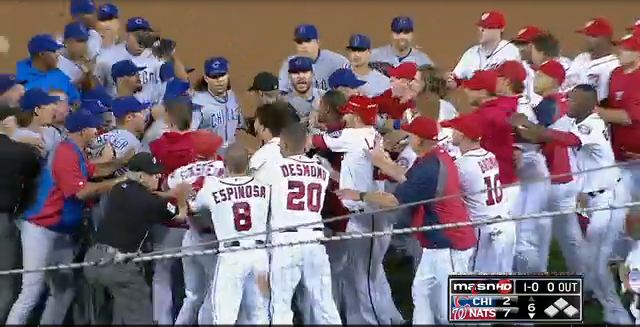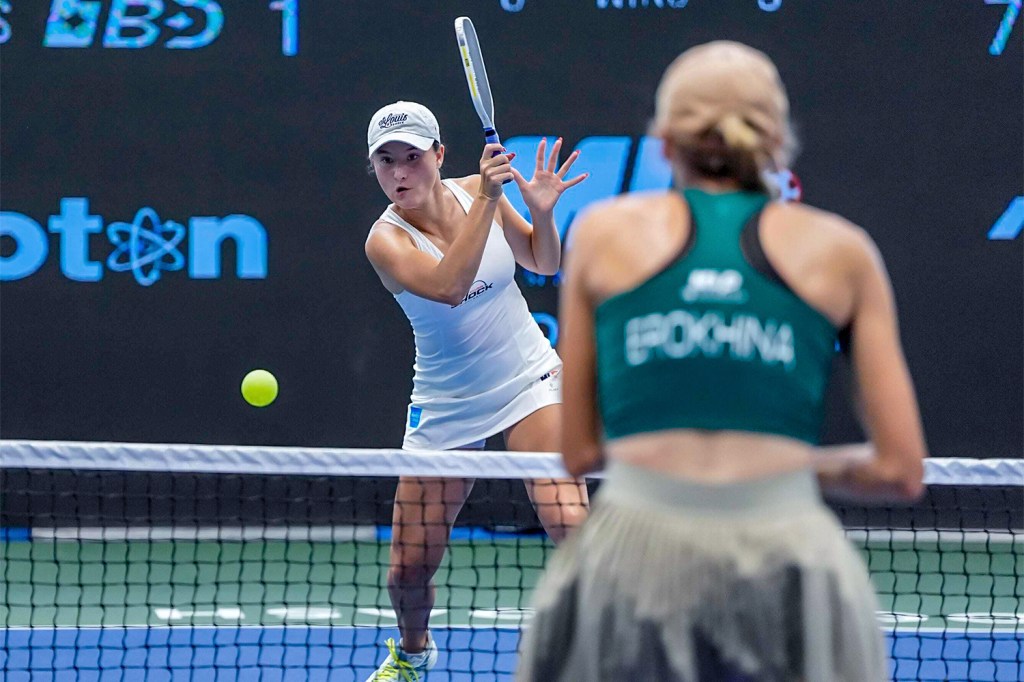State of the League’s (dis)Unity
How apropos…as all focus was on President Trump in Washington delivering the State of the Union Address last week, MLB Commissioner Rob Manfred was out in Los Angeles doing very much the same; discussing the state of the game at MLB’s Quarterly Owner’s Meetings.
The week began with a few widely accepted updates for the league in 2018, as well as an elucidation on some of the positive trends developing in the game. After far too many injuries from bats and balls flying into the stands, all 30 teams have announced they will be extending the protective netting this year.

Wahoo! Finally, a decision. (Image: Yahoo.com)
It was also reported that the Cleveland Indians will finally be removing their controversial Chief Wahoo logo from all elements of their uniforms by 2019.
Commissioner Manfred continued by celebrating the influx of young, exciting talent entering the game and their marketability, the success the MLB Advanced Media, and the health of a robust, growing economy for the game. Yet as in politics, not all is sunshine and rainbows…there were also many divisive issues afflicting the league that emerged.
Manfred, who has long advocated for shortening games and establishing rules to improve overall Pace of Play, brought up a few of the proposals that he and the owners have suggested recently. These include everything from the implementation of a pitch clock to a limit on the number of mound visits per game; financial incentives for faster play, establishing shorter commercial breaks, and even the idea of bringing back the bullpen cart was floated out there by some.

I Want One! (Photo: MLB.com)
Players have resisted the measures, although after proposing them over a year ago, Manfred now has the power to institute them unilaterally prior to the season in 2018. While he now has that ability, the Commissioner has long said that he would much prefer to have agreement from the Player’s Association with any changes made. That’s why the updated Pace of Play proposal delivered at the Owner’s Meetings was a much watered down version of previous iterations.
Instead of forcefully implementing the original proposal suggested- including the addition of a 20-second pitch clock for 2018- Manfred has tried to be responsive to the members of the players association that disagree. That’s what led to the updated plan announced at the meetings last week, which calls for:
- The time-of-game goal for 2018 would be to play games in under 2 hours, 55 minutes; if 2:55 or longer then an 18-second pitch clock would be put into effect for the 2019 season. If the average game time was under 2:55 in 2018, then MLB would play in 2019 without a pitch clock, and the time-of-game goal would be 2 hours, 50 minutes. If that goal wasn’t met, the use of a pitch clock would be triggered for 2020.
- MLB would implement a six-trip limitation to the number of mound-visits allows per game.
- Specific times would be established for pitchers to warm up between innings and for hitters to approach home plate to promptly restart play; but no penalties would be attached for 2018 with a review at the end of the year.
- MLB would withdraw its request for a between-batter timer if the union is willing to reach an agreement on the pace-of-play initiatives.
- Credit: ESPN.com
This attempt at collaboration was met by the Players’ Association with anger, animosity, and a declaration of their displeasure with the state of free agency and some of the other issues they see as much more troubling for the league. The association’s Executive Director, Tony Clark, actually responded to the Pace of Play proposal with a curt statement that read: “As we sit here today, the first week of February, our focus is on the 100-plus free agents still available.” Players like Dodgers pitcher Kenley Jansen brought up the idea of a potential strike in the future (and they’re not talking about pitch location…) with powerful agent Brodie Van Wagenen going as far as suggesting a holdout leading up to Spring Training in two weeks.
The always vocal Scott Boras has decried the situation as a “non-competitive cancer ruining the fabric of the sport.” He sees teams like the Pirates, Marlins, and Rays more focused on rebuilding than contending, and believes that the current system has a major flaw. Teams are being pushed to one of two poles: either making a concerted effort at contention or tearing the franchise apart and focusing on a full-blown rebuild. The lack of a middle ground has “removed hope and faith from the fan,” and is what Boras believes is responsible for the free-agent freeze. While the league as a whole is making plenty of money, the average team payroll is expected to drop for the first time in years.
How all of this gets resolved definitely merits watching, as it is going to be incredibly significant to the players, teams, and fans of Major League Baseball. Labor relations between the players and the league haven’t been this divisive for decades. The last time the situation was this contentious was 1994, and we all know what happened that year (a strike that ruined the season, disrupted the league, and is what some believe led to the steroid-era).
With spring training just a few weeks away, “it’s getting late early,” as the sagacious Yogi Berra would say. Will the 100+ free agents still available be signed with their teams? Which of Manfred’s proposed rule changes will actually be implemented to improve Pace of Play? All will definitely be addressed in the league’s next Collective Bargaining Agreement in 2021, if not sooner. Let’s just hope there’s not a bench-clearing brawl…

Break it Up! Break it Up! (Photo: NatsEnquirer.com)
















